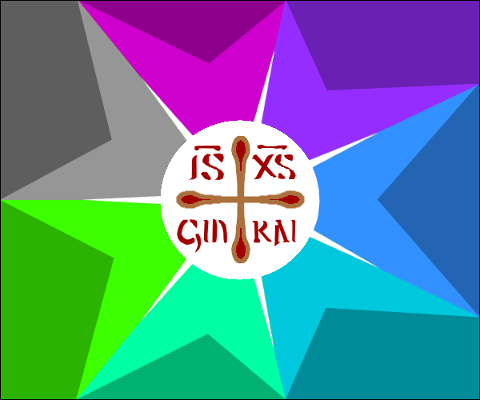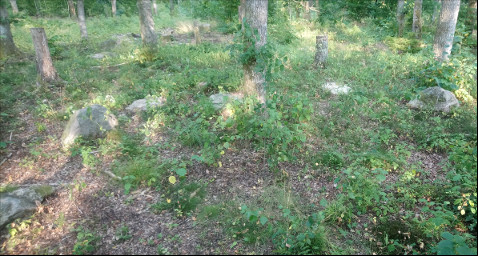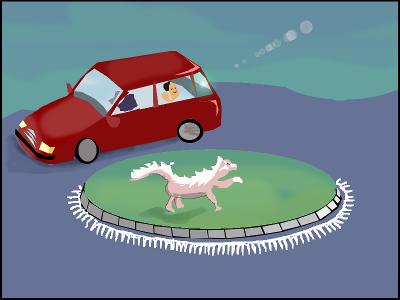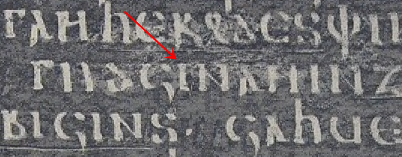
The rainbow symbolizes national and/or racial diversity in Christianity. Jiukai is pretty much the Gothic equivalent of Greek νίκα ‘prevail’, except it may be optative rather than imperative.
Continue reading


The rainbow symbolizes national and/or racial diversity in Christianity. Jiukai is pretty much the Gothic equivalent of Greek νίκα ‘prevail’, except it may be optative rather than imperative.
Continue reading
A friend made me aware that Dr Michael S. Heiser passed away on February 20 of this year (2023). He was associated with the Logos project and wrote prolifically entertaining articles on his own blog to raise interest in bible study in the ancient languages. I was unaware of his scholarly work on The Council of El as mentioned in Psalm 82. It is a very important topic, so I will try to summarize his findings and give my own perspective on it in purple text so that it’s easy to tell our ideas apart.
Psalm 82 begins: (Psalm by Asaph)
אלהים נצב בעדת–אל בקרב אלהים ישׁפט
Elohim stands in council(/church) of El; among Elohim he judges.
ὁ θεὸς ἔστη ἐν συναγωγῇ θεῶν, ἐν μέσῳ δὲ θεοὺς διακρίνει.
Heiser explains that we can be sure the first instance of Elohim is singular since the verb is grammatically singular, and that the second instance is plural (among the gods) because you can’t be “among” a single person.
To me this is an interesting psalm because the word for council corresponds to the Syriac word for church, as used in the NT Peshitta, and because I have noted that churches as judges’ rings (that I wrote about previously) tend to be located in the same places (on a sandy hill, ca 100 m from a creek or a lake). Indeed, “church” has etymological connections to words for rings. Could this psalm be an example of democracy mentioned in the Old Testament and what is the connexion between democracy and theocracy?
I would like to note that this verse supports the idea expressed by St Paul in 1 Corinthians 5:12 that members of a church typically should judge other members of that church but not persons who are outside the church.
Just joking.
Jeff A. Benner wrote an article at Ancient Hebrew Research Center about this verse:
‘None is able to serve two lords, for either he will hate the one and love the other, or he will hold to the one, and despise the other; ye are not able to serve God and Mammon.’ (YLT)
I would like to explore the idea of his last paragraph, so I quote half of it:
There is one other possibility that did come to mind as I studied the word mammon. This word could be a translation of the Hebrew word gad. Besides being the name of one of Jacob’s sons, gad is also a Hebrew word that means “wealth” or “profit,” just as mammon does. But not only that, both the Hebrew word gad and the Aramaic word mammon are also the names of gods, both being the gods of, you guessed it, “wealth and profit.”
That’s Jeff’s idea. What is my idea?
My understanding of Gothic history has them living near Syria up to late bronze-age, being the Guti people mentioned here by Wikipedia. Jordanes then, in his prehistorical section, has them splitting in two peoples, one being the Goths, the other being the Persians. This means we could have Gothic language underlying the biblical text at any point in time—Old Testament and New Testament—such as Jesus quoting a saying in Gothic and translating it into Hebrew, Greek or Aramaic.
What is this verse in Gothic if we replace ‘Mammonin‘ with a proper case of the name Gad?
Gad is not mentioned within the surviving Gothic corpus, but an *Azgad is mentioned in gentive “Azgadis” in Nehemiah 7:17. Actually, he is mentioned as Gad, as the Gothic version probably leaves out the Az- prefix. I find no class of nouns that end in -is in genitive singular, which end in anything other than -a in dative singular, except feminine words, but Gad was probably a male God, so we get:
… ni maguþ Guda skalkinon jah Gada.
… 𐌽𐌹 𐌼𐌰𐌲𐌿𐌸 𐌲𐌳𐌰 𐍃𐌺𐌰𐌻𐌺𐌹𐌽𐍉𐌽 𐌾𐌰𐌷 𐌲𐌰𐌳𐌰:
In addition, there may have been a change of word-order in translation, so the saying could have been:
Ni Guda jah Gada skalkinon maguþ.
Jewish Encyclopedia writes about Gad: “The name was doubtless originally an appellative, meaning “the power that allots.”” So next time you hear someone burst “Oh my Gad!”, you will know they serve not God, but the socialist government—the power that allots.

One of the things that connect Scandinavian iron-age burial culture with that of the Wisła/Vistula river mouth, and therefor the Wielbark archeological culture, is the stone circles — graves which, according to Scandinavian tradition, were used as thing-sites and judicial courts: called domarringar ‘judges’ rings’. They are circular formations of an odd number of raised or boulder-shaped stones, typically located on a hill ca 100 m from a watercourse.
Do they hold a mystery for us?
Continue reading
1. Tyre
2. Dan
3. The Copper Snake
Maybe you aren’t fully acquainted with the phenomenon of roundabout dogs. It is a statue of a dog, which somebody places in a roundabout, usually without applying for permission. It has been particularly common in Sweden, though it looks like it is mostly Scanians and x:th generation immigrants who do this, perhaps to make Swedish society feel less cold.

Typical roundabout dog
For fun, let’s translate David’s psalm for the last day of the Tabernacle feast into Scanian. Here it is:
1. Gai Jehowâ, ni gudasöner;
Gai Jehowâ er hai o bravâd!
2. Gai Jehowâ hans namnets hai;
tilbai Jehowâ i hans hailia sâl!3. Herrens kall øver vannen, Gud Haili dauna, Herre øver många vann.
4. Herrens kall i førsvâr; Herrens kall i ammelihait.
5. Herrens kall kærvar caider o Herren kærvar Libanons caidrar,
6. får dem att vaja som en Libanaisisk tjur, o Sirion som af ainhørninga ætt.7. Herrens kall e reivande ilds låga.
8. Herrens kall ryster ørken; Herren ryster aiden Kwadesh.
9. Herrens kall swarvar hindar o barkaflænger lund o i hans tempel snackar alla haider.10. Jehowâ uppehåller sig i inflödet
o Jehowâ sitter kung i aiwena.
11. Jehowâ ger manke åt sitt folk.
Jehowâ bringar sitt folk fred.
As far as I know (C. ambrosiana O 39 sup.), Origenes kept the Name of G-d in verses 1-3, but not in the other places. Recognizing the “Call of the Lord”-pattern of verses 3-5 and 7-9, and since we have the advantage of digital editing (it’s more frustrating when you see the pattern after you have written the line on super-expensive parchment), it seems reasonable to keep HaShem in every verse except the ones with the call.
Continue reading
In Luke 1:5 Wulfila.be’s text reads “… gudja namin Zakarias …”. Doesn’t it look like it should be “… gudji namin Zakarias …”, however? (They do note that the text is ‘partially normalized’.)

Benzelius also transcribes “gudji”. In other places this /i/ occurs in the words gudjinon ‘serve as priest’ a few verses later in Luke, and gudjinassus ‘priestly office’ at Luke 1:9 and 2 Corinthians 9:12. So this might be another split word which I couldn’t find by searching digitized texts. On the other hand, the difference between gudja and gudji is so slight that a scribe might well use the form he or she is used to.
In A Comparative Germanic Grammar Eduard Prokosch (or perhaps his editor Bolling) sums up the underlying grammar nicely:
81§
In Germanic all ā-stems are feminines, but elsewhere also masculines occur, denoting types of human beings, e.g., L. scrība, poeta, agricola, OSl. sluga ‘servant’, vojevoda ‘army leader’, Gk. νεανίας ‘youth’.
[…]
B. jā-Stems.
[…]
In Germanic, we find the endings -jā and -ī. Gothic and Old Norse use the former with short stems, the latter with long stems: Go. banja ‘wound’, sibja ‘relationship’, halja ‘hell’, but bandi ‘band’, þiudan-gardi ‘kingdom’, þūsundi ‘thousand’ […]
Balg suggests the word formation as: “from stem of guþs and suff. -jan”. He gives the gender as masculine. Are there any more Gothic masculine words ending in -a? Yesh!
aba ‘husband’ (Irregular in the plural, according to Lambdin 6.1 (p20))
abba ‘father’
afdrugkja ‘drunkard’
aha ‘mind’
ahma ‘spirit’
aiwaggelista ‘evangelist’ (Balg: from L. evangelista)
aldoma ‘old age’ (Only occurring in Luke chapter 1)
allawaurstwa ‘one who works with all his might, perfect’ (Only occurring in Colossians 4:12)
ara ‘eagle’ (Only occurring in Luke 17:37)
atta ‘father’
bandja ‘one being bound’
… and so on.
Lambdin notes for weak nouns that -n remains in all cases and numbers except nominative, so they would have, originally, had stems ending in -n.
I’d point out that aba, abba and atta might be onomatopoetic, originally used by a small child not knowing about cases, and that the case endings for weak nouns contain sequences with prepositional character, namely -in and -an, with the sense of ‘in’ and ‘against/on’, thus expressing the functions of the dative and accusative cases respectively.
Nom: atta
Dat: attin
Acc: attan
Well, well.
In Luke 15:25, the prodigal son’s brother “qimands atiddja neƕ razn”. Me thinks a continental Goth would say and write “qimands atiddja neƕa razn”. What do you think?
It’s Easter-time again, so let’s look at some gospel passages.
The Gothic script used in codices Argenteus and Ambrosianus is encoded with more than 24 bits in Unicode/UTF-8. We say they are in the “Second half-pane”. Almost everything else of merit gets encoded with less than 24 bits, so software makers sometimes implements UTF-8 only up to 24 bits and hope that language minorities, who want to use characters above the limit, will be imprisoned for hate speech before reaching their office.
For LaTeX, I have tested only with XeTeX and TextEdit on Mac. We will use the fontspec library. We will also need a Wulfilan typeface as *.otf or *.ttf. We can place a copy in the catalogue where we have the .tex-file.
Continue reading